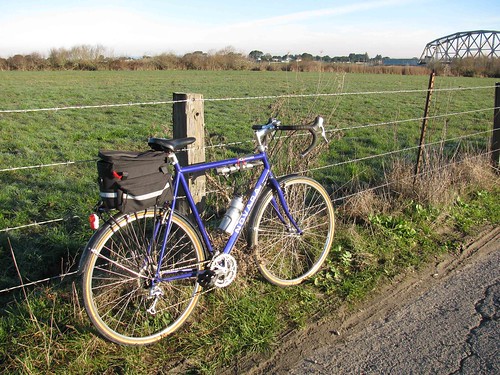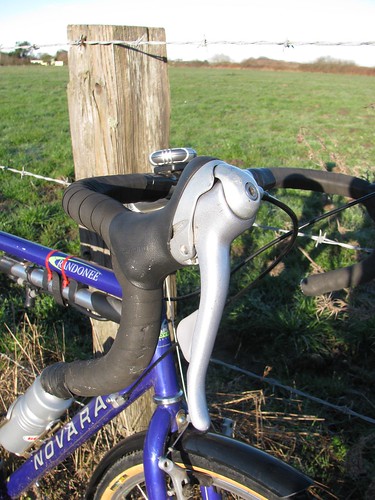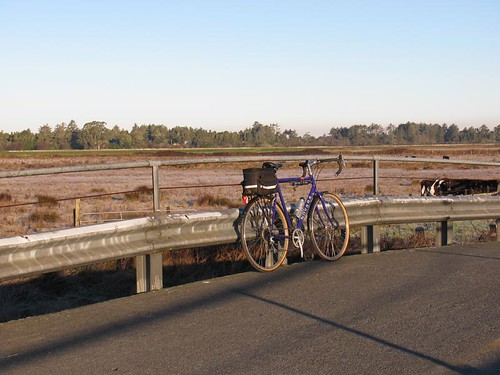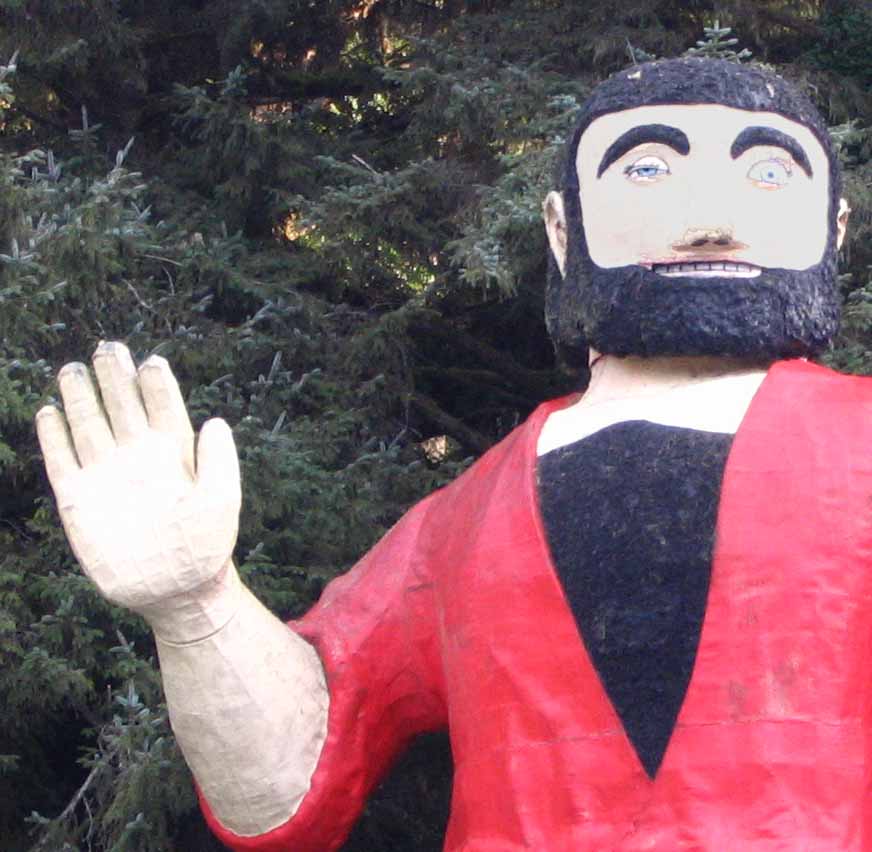Introducing the REI Navara Randonée

Meet my “new” bicycle, the REI Navara Randonée. I bought it used on craigslist and recently finished outfitting it with all the bells and whistles from my old Cannondale.
This purchase is the culmination of months of shopping and lots of thinking about what kind of bicycle would best suit my needs. There are several notable features.
It has a steel frame designed for touring. The frame geometry helps absorb the shock from Humboldt’s notoriously crappy roads. Plus, there are lots of brazons for connecting water bottle cages, racks and fenders.
The bike has a big frame, 59 cm to be exact. Some might consider that too large for a fellow who stands 5' 11", but I subscribe to the Rivendell philosophy when it comes to frame sizing.

The other feature I wanted in a bike was gobs of clearance so I could use big, fat tires with fenders. The bike came with these spanking new 35 mm tires.

I wanted old fashion index shifters, but the bike came with these super fancy STI shifters. You click these brake levers side to side to shift gears. They’re luxurious and they work great, but I hate having something I don’t know how to fix. So I’ll enjoy them while they last, then I’ll simplify.
The seller gave me new handlebar cork, but I'm waiting to install it until I'm sure I don't want to make any more modifications.
The bike came with simple platform pedals, which I’m enjoying for the time being. Eventually, I may install my old-school toe clips, but maybe not.
The Randonée is the kind of bike you could load up with gear and pedal around the world, although crossing the oceans would be somewhat daunting.

So what’s up with the name Randonée?
Here’s an excerpt from http://www.rusa.org, the website of Randonneurs USA:
There is no direct English translation of the French term “randonnée”, which loosely means to go on a long trip, tour, outing, or ramble, usually on foot or on a bicycle, along a defined route. A person who goes on a “randonnée” is called a “randonneur”. (The correct French term for a female participant is “randonneuse”, but such distinctions are often lost in America, where we tend to lump everyone together).
In cycling, it means a hard-riding enthusiast who is trying to complete a long randonnée inside a certain time allotment. Note that a randonnée is not a race. Overall, about the only thing being first earns is some bragging rights. It is not uncommon for the last finishers to get as much applause as anyone else.
Indeed, there is much camaraderie in randonneuring. One does it to test oneself against the clock, the weather, and a challenging route - but not to beat the other riders.
In comparison to other forms of competitive long-distance cycling, such as at the Race Across America (RAAM), where there are following cars with crews supporting the riders every inch of the way, randonneuring stresses self-sufficiency. Help can only be given at the checkpoints along the route, so support crews (if there are any) must leapfrog the rider. Any rider caught receiving assistance from a support crew in-between checkpoints (or, “contrôles” as they are commonly called) will be subject to a time penalty, or even disqualification.
Randonneurs are free to buy food, supplies, or bike repairs at any stores they encounter along the route. Once riders have successfully completed a 200-kilometer “brevet”, they are entitled to be called a “randonneur” or “randonneuse”.
Well, if I'm going to ride a bike called a Randonnée, it only makes sense that I be allowed to call myself a randonneur. But to do so, I'll need to complete a brevit, which is about 120 miles. More on that later.


0 Comments:
Post a Comment
<< Home